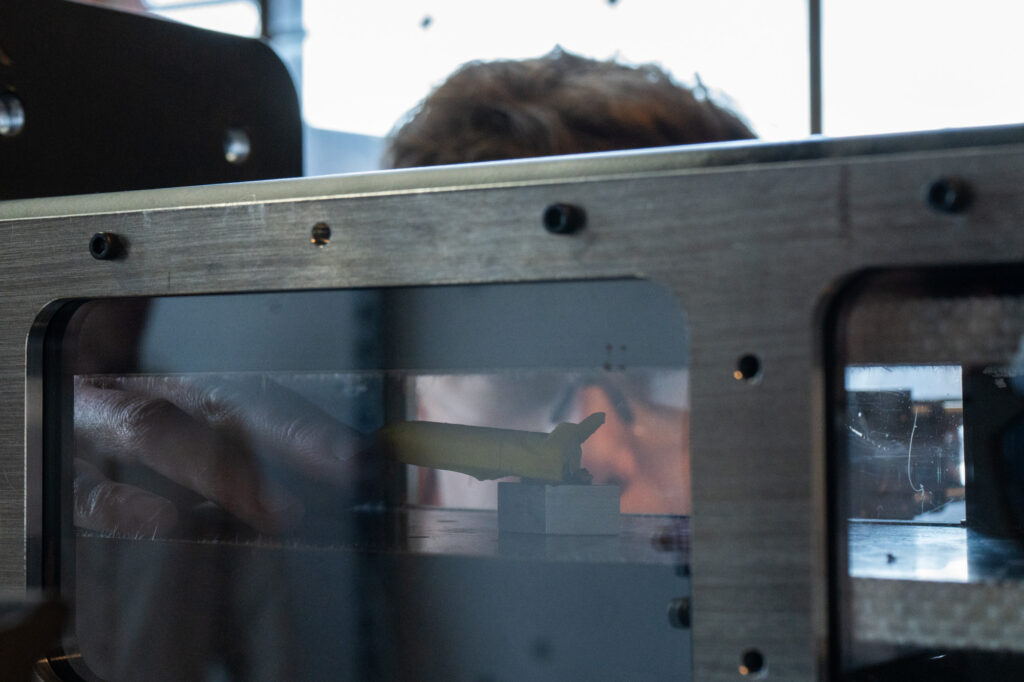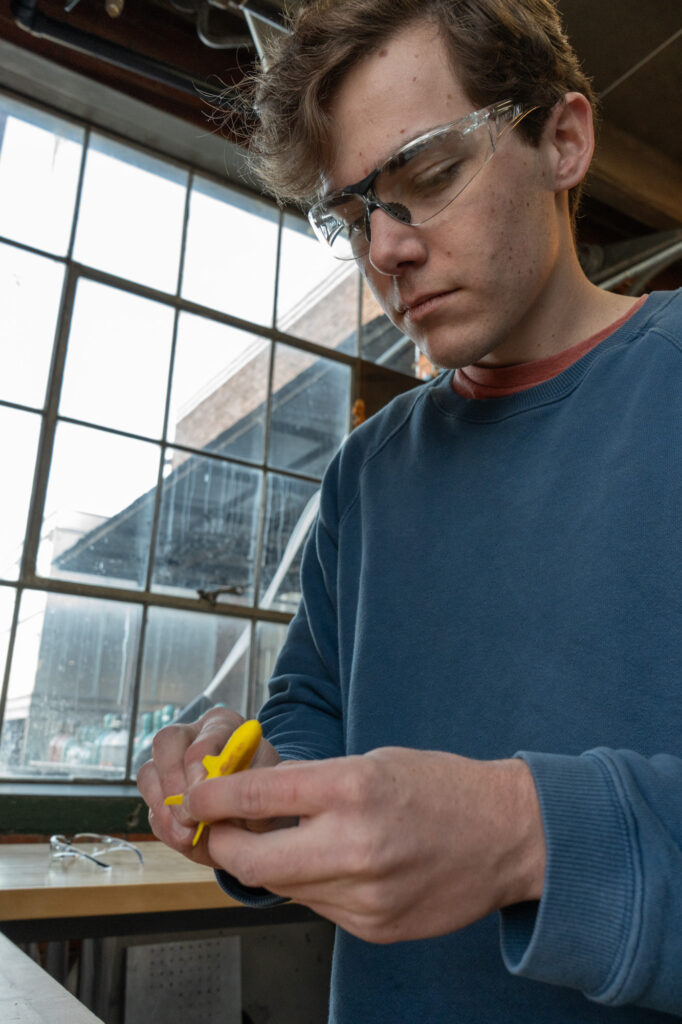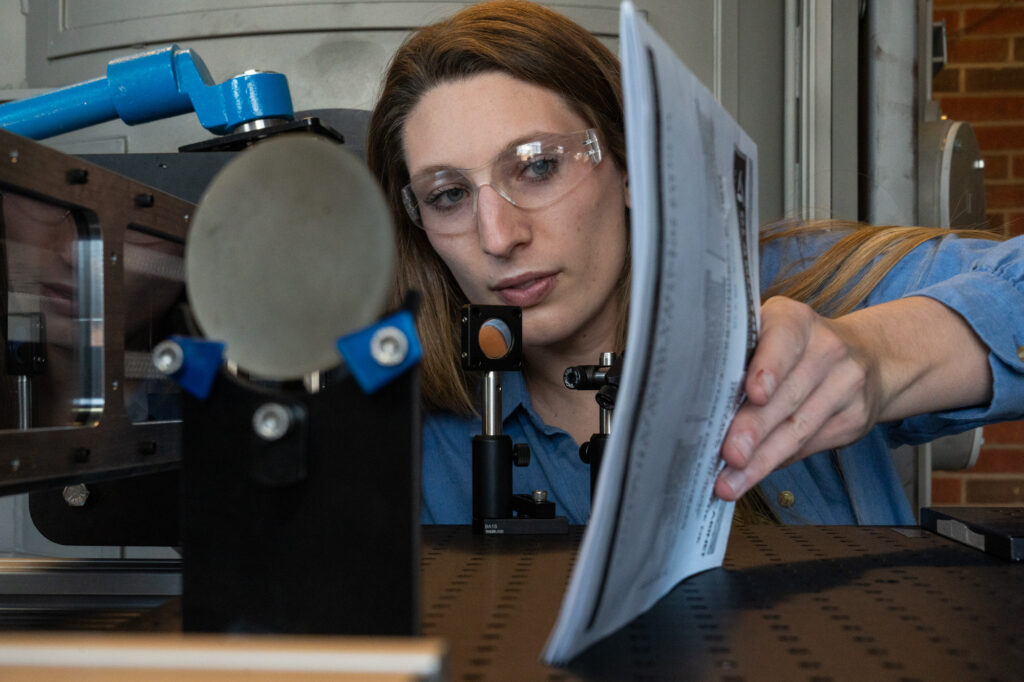
Mechanical engineers at Colorado State University built a new hypersonic wind tunnel that will advance high-speed military, space, and commercial transportation.
The tunnel is one of about 10 devices in use across the nation, giving CSU distinctive research capabilities similar to NASA and the U.S. Air Force. The smaller, highly efficient tunnel can also run up to 15 experiments daily, a significant increase from current state-of-the-art devices that are usually limited to one or two per day.
Ciprian Dumitrache, director of the CSU Aerospace Propulsion and Diagnostics Laboratory (APDL), and his team will use their tunnel to uncover the science and physics behind a hypersonic, “airbreathing” engine known as a scramjet. In a 5.25 x 5.25 x 50-inch test section tunnel, APDL runs experiments in support of this new faster, more agile and efficient aircraft engine. The engine could improve transportation for space exploration, military defense crafts, or, someday, commercial airliners.

What is a scramjet?
Hypersonic flight is achieved using rocket engines carrying two tanks: A fuel and oxidizer tank. The oxidizer is a chemical which reacts with fuel for propulsion.
Dumitrache compares traditional rocket engines to wearing scuba gear on land. If you’re walking outside with oxygen all around you, it’s unnecessary to wear an oxygen tank. Plus, it’s heavy, making it more difficult to complete tasks.
Scramjet engines, or “air breathing” engines, eliminate the need for an oxygen tank by pulling air directly from the atmosphere, enabling flight for extended periods of time and acceleration up to 15 times the speed of sound.
A challenge that arises with systems capable of flying at hypersonic speeds is preventing the flame that enables combustion from extinguishing.
“Imagine you have a lit candle, and you blow on top of it. Even at a very small speed, the candle’s flame is quenched. Well, imagine that same candle, but you blow on it with supersonic speeds. It would be very hard to hold that flame stable. This is what my research is based upon—how do we hold that flame inside an engine at those speeds and not quench it?”
How it works
Watch a brief video on how it works.
The tunnel was designed and built by Dumitrache’s team, including CSU mechanical engineering students, using a vacuum tank donated by industry partner Dynavac and funding from the CSU’s Vice President for Research.
The indraft wind tunnel has four main components: intake, accelerating nozzle, test section, and vacuum tank. The tunnel operates by vacuuming the “dump” tank, then opening a valve which pulls air in from the atmosphere. As the air flows through the tunnel, the nozzle conditions the flow and accelerates the air to Mach 2.5.
The tunnel is modular, allowing it to run experiments on every aspect of a scramjet engine, including air intake design, engine ignition, fuel mixing, and flame stabilization. It can be run to study both external air flows, simulating aerodynamic forces aircrafts encounter in flight, as well as internal flows, simulating the passage of the air through the engine.
Meet the team
A group of undergraduate and graduate students in Dumitrache’s lab have made major contributions to the research, including the design, creation, and experimentation of the wind tunnel.
“Bringing in students and involving them in research is incredibly important, especially in a place like Colorado,” said Dumitrache. According to MetroDenverEDC, Colorado is home to the highest concentration of aerospace employees and has the second-largest aerospace economy in the nation.
Spencer Teeter, graduate student researcher

Spencer Teeter started on the project as an undergraduate for his senior design course conceptualizing and designing the tunnel.
Teeter now works on the project as a graduate student studying scramjet fuel mixing.
“We can put fuel in a scramjet, but there’s no guarantee that the fuel and the air will actually mix to a ratio that will allow it to combust, and for the flame to stay within the confines of the engine. If the flame goes off, this is called a flameout —it’s actually quite common, and even happens on NASA research vehicles. It’s still a problem we’re trying to solve after decades of research.”
Katie Plese, undergraduate student researcher

Katie Plese is a senior undergraduate mechanical engineering student working on increasing the speed of the tunnel’s intake by heating the air that passes through. Currently the tunnel sucks in air at Mach 2.5; she’s aiming for Mach 7.5.
“It sounds like a simple problem, but what we’re talking about here is a two second event. My job is to figure out how to heat up the air in that short period of time.”
Plese was recognized for research during the student poster session of the American Institute of Aeronautics and Astronautics Rocky Mountain Section symposium at CSU in 2023.
Eli House, graduate student researcher

Eli House is a graduate student in mechanical engineering. House is developing a computer program to model tunnel experiments. Creating a model removes guesswork involved with experiments—there are too many elements to control.
The program gives him the ability to control experiment parameters and confirm the theory behind what’s happening physically in the tunnel.
Ciprian Dumitrache, lab director and student advisor

As director, Dumitrache oversees ADPL research, and advises the students in his lab. He is also a CSU Department of Mechanical Engineering assistant professor and alumnus.
His interests in advanced aerospace propulsion systems come from childhood, when Dumitrache used to build rocket models dreaming of becoming an aerospace engineer. As a student, Dumitrache studied combustion instabilities in liquid rocket engines and laser ignition for aero engines.
“Our research in hypersonics isn’t just about breaking speed barriers; it’s about unlocking a new frontier that could revolutionize transportation, national security, and space exploration,” said Dumitrache.